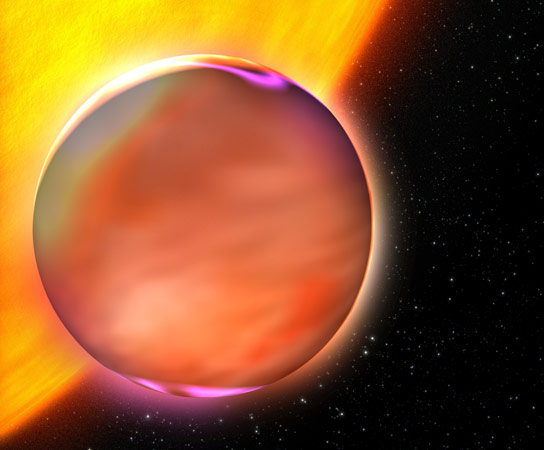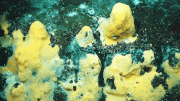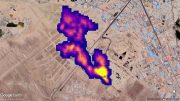
This is an artist’s concept of HD 189733b and its parent star. Credit: NASA, ESA, and G. Bacon (STScI)
Researchers from University College London and the University of New South Wales have developed a new model that focuses on methane to detect life on planets outside of our solar system.
A powerful new model to detect life on planets outside of our solar system, more accurately than ever before, has been developed by UCL researchers.
The new model focuses on methane, the simplest organic molecule, widely acknowledged to be a sign of potential life.
Researchers from UCL and the University of New South Wales have developed a new spectrum for ‘hot’ methane which can be used to detect the molecule at temperatures above that of Earth, up to 1,500K/1220°C – something which was not possible before.
To find out what remote planets orbiting other stars are made of, astronomers analyze the way in which their atmospheres absorb starlight of different colors and compare it to a model, or ‘spectrum’, to identify different molecules.
Professor Jonathan Tennyson, (UCL Department of Physics and Astronomy) co-author of the study said: “Current models of methane are incomplete, leading to a severe underestimation of methane levels on planets. We anticipate our new model will have a big impact on the future study of planets and ‘cool’ stars external to our solar system, potentially helping scientists identify signs of extraterrestrial life.”
Lead author of the study, Dr. Sergei Yurchenko, (UCL Department of Physics and Astronomy) added: “The comprehensive spectrum we have created has only been possible with the astonishing power of modern supercomputers which are needed for the billions of lines required for the modeling. We limited the temperature threshold to 1,500K to fit the capacity available, so more research could be done to expand the model to higher temperatures still. Our calculations required about 3 million CPU (central processing unit) hours alone; processing power only accessible to us through the DiRAC project.
“We are thrilled to have used this technology to significantly advance beyond previous models available for researchers studying potential life on astronomical objects, and we are eager to see what our new spectrum helps them discover,” he added.
The new model has been tested and verified by successfully reproducing in detail the way in which the methane in failed stars, called brown dwarfs, absorbs light.
Reference: “Spectrum of hot methane in astronomical objects using a comprehensive computed line list” by Sergei N. Yurchenko, Jonathan Tennyson, Jeremy Bailey, Morgan D. J. Hollis and Giovanna Tinetti, 16 June 2014, PNAS.
DOI: 10.1073/pnas.1324219111









Be the first to comment on "Researchers Develop a New Model to Detect Life on Planets Outside of Our Solar System"